What is Bone Marrow Transplant?
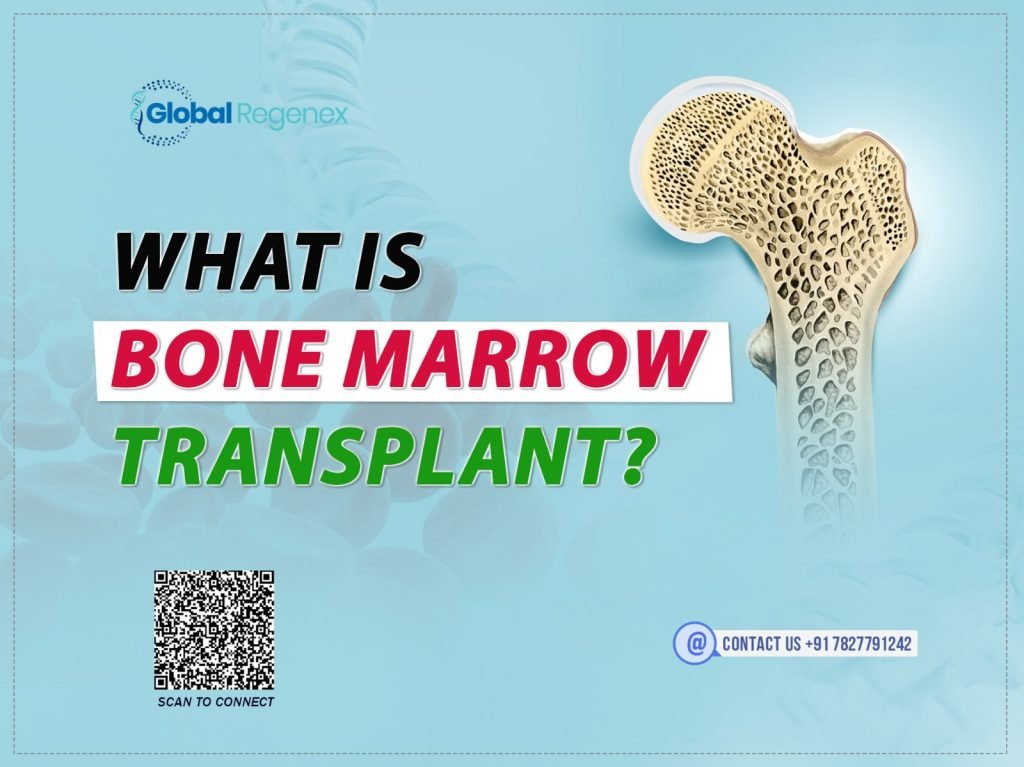
Have you ever stopped to consider how contemporary regenerative medicine battles life-altering blood conditions or some cancers, such as leukemia? Let us be honest here, one of the most exciting treatments today is the bone marrow transplant, an operation that has changed so many lives globally. If you are familiar with it but do not entirely know how it works. Let’s investigate how the amazing process functions, how it employs stem cells, and why it’s an integral component of cutting-edge medical treatment today. What Is a Bone Marrow Transplant? Bone marrow transplant, also known as stem cell treatment, is a medical treatment in which damaged or impaired bone marrow is replaced by healthy stem cells. The stem cells might come from the patient’s own body (autologous) or a donor (allogeneic transplant). The true goal of this procedure is to help the patient’s body produce healthy blood cells again, which will revive the immune system and enhance the chance of recovery from life-threatening diseases. How Does Stem Cell Therapy Work in a Transplant? The process of bone marrow transplant relies on stem cell therapy in India. After a patient has gone through strict therapies like chemotherapy or radiation therapies, which destroyed the sick cells, healthy stem cells can be introduced into the patient’s blood. From the blood, the stem cells will circulate to the bone marrow, and they will stay and commence the process of producing blood cells respectively. There is hope that the therapy can cure many diseases that were considered critical and difficult to cure before, and that the practice will expand from the establishment of new medicine and breakthroughs each year. Who Needs a Bone Marrow Transplant? This advanced bone marrow transplant can also be used in treating the following diseases: Leukemia Lymphoma Multiple Myeloma Severe Aplastic Anemia Inherited blood disorders (like thalassemia and sickle cell anemia). Patients with above mentioned conditions before undergoing the treatment, doctors will evaluate your case carefully to determine if this transplant is the right choice for you, depending on your condition, age, and overall health. The Bone Marrow Transplant Journey: What to Expect Evaluation: Before your treatment, doctors run some tests to check if you are a good candidate. Stem Cell Harvest: Stem cells are derived from the patient’s own bone marrow or a donor. Transplant Day: After complete evaluation, the patient is infused with stem cells, similar to a blood transfusion. Post-Treatment Recovery & Care: Patients are closely monitored as new cells start working after the transplant. Recovery might take several months or weeks, and the patient may need to spend time in a sterile environment initially to prevent infection. For Expert Advice For trusted expert guidance, look to Global Regenex. Their staff of experts stands ready to walk you through each step of the process, responding to your questions regarding stem cell therapy, discussing the possible advantages, and assisting you in deciding if stem cell treatment in Delhi is the best option for you. As Conclusion Bone marrow transplants are more than a medical procedure—they’re a second chance at life for those suffering from serious diseases. Through the miracle of stem cell technology, this kind of procedure has changed healing and recovery forever. If you, a loved one, or a family member needs treatment, knowing about bone marrow, stem cells, and transplants will help with informed decision-making and hope through science.
What Country Treats Hearing Loss With Stem Cells?
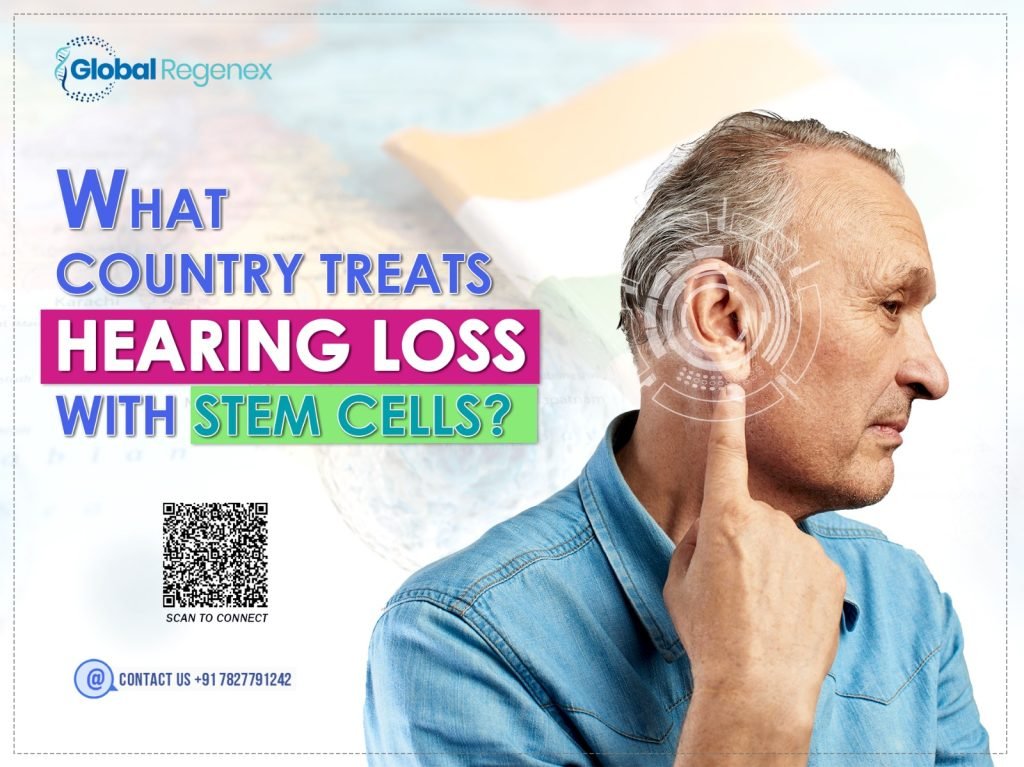
Have you ever wished there was a true fix for hearing loss—something other than hearing aids and implants? Imagine if technology could actually make you hear. Well, seeing the medical advancements in the field of regenerative medicine in India. India is one of the only nations presently providing stem cell treatment for hearing loss, holding out hope to patients who once were told there was nothing else that could be done. If you’re tired of experiencing hearing impairment, and want to learn about how stem cells work and why India is at the forefront may be the beginning of a life-altering remedy. Keep reading! Why India is Leading in Stem Cell Treatment for Hearing Loss? India has become the forefront in regenerative medicine, with increasingly advanced medical centers performing stem cell therapy. Stem cell treatment for hearing loss is also being considered to stimulate regeneration of the minuscule hair cells located within the cochlea, responsible for hearing. When such cells get damaged, because of aging, noise exposure, or illness, conventional treatments merely treat the loss. Stem cell treatment in India, however, seeks to regenerate and rebuild these vital structures. Advantages of Stem Cell Transplant in India Here’s why India is the preferred destination for patients opting for advanced therapy for hearing loss: Advanced Medical Technology: India’s leading hospitals have superior facilities to conduct stem cell procedures. Regenerative Medicine Expertise: India has some of the world’s most skilled stem cell scientists and physicians with expertise in ENT and neurological conditions. Cost-effectiveness: Perhaps the largest benefit is that stem cell transplant in India is much cheaper than in most Western nations, without sacrificing quality. High Success Rates: Patients have experienced significant enhancement of hearing and general well-being after they have received treatment in India. Medical Tourism Support: With visa support, airport transfers, and individualized care, India is completely equipped to serve foreign patients. How Stem Cells Help Restore Hearing? Stem cells are specialized cells because they have the ability to convert themselves into different forms of body tissues or cells. When there is hearing loss, they can be employed to replace the sensory hair cells in the cochlea. The cells also have the ability to improve the transmission of signals to the brain, likely regaining normal hearing functions, bringing hope to hundreds of millions of patients worldwide. India’s clinics and research centers are already running promising patient programs and trials that bring this cutting-edge therapy within reach today. Is Stem Cell Treatment Safe? Safety comes first in India’s stem cell treatment. The treatment is usually conducted under strict medical protocol and ethics. Patients go through an extensive assessment before treatment to ensure they are eligible candidates. Stem cell therapy may still be considered experimental in hearing loss, yet numerous patients have reported marked improvement. For Expert Advice If you or someone you love is suffering from hearing loss and looking for a new, science-based solution, look into stem cell therapy in Delhi, as it could be the solution you have been seeking. To make your process simpler, you can also seek to consult Global Regenex, they are a top name in stem cell therapy and regenerative medicine consultancy. Their expert team will be with you every step of the way, from informing you of the treatment to pairing you up with the superb specialists. You should consult the experts at Global Regenex before proceeding with your treatment to guide you in making a comfortable, informed, and confident choice concerning your care. Endnote India is becoming a world leader in regenerative medicine, providing genuine hope with stem cell therapy for diseases previously deemed incurable, such as hearing loss. Through high-tech facilities, highly skilled professionals, and low-cost healthcare, stem cell transplantation in India is changing lives daily. If you’re considering new solutions to hearing restoration, India offers both expertise and access. And with professional guidance from Global Regenex, you’ll proceed with confidence, knowing you’re in skilled hands on your way to improved hearing and an improved quality of life.
Stem Cell Therapy for Stroke Patients in India
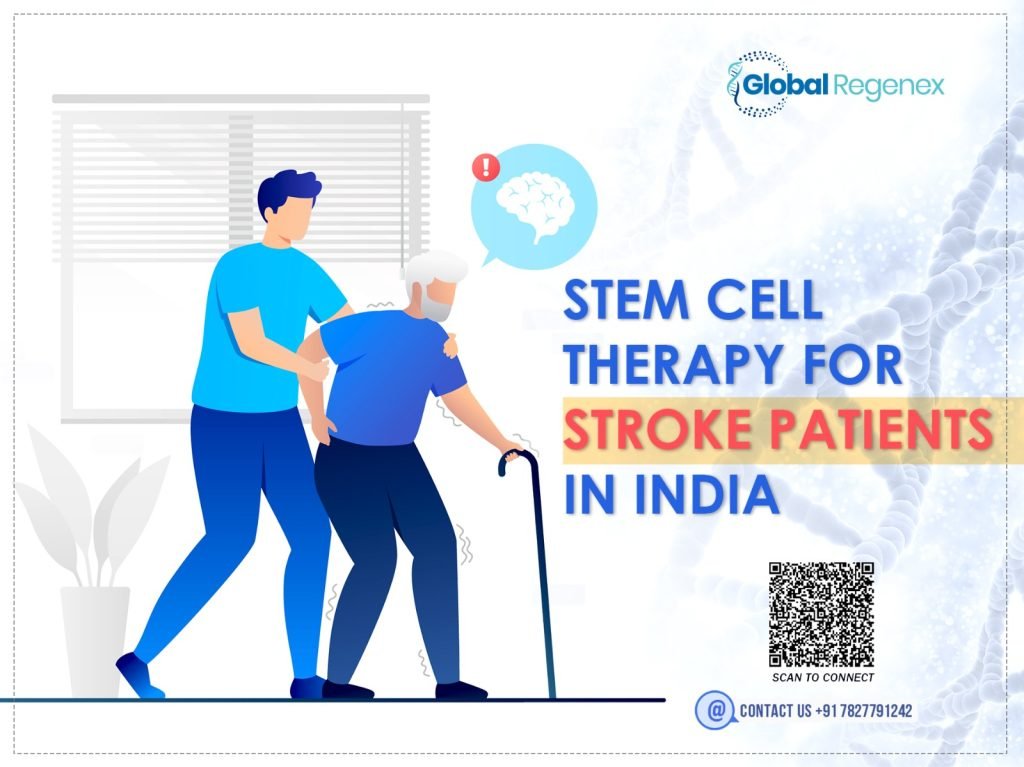
Stroke remains one of the leading causes of long-term disability, with most patients having very limited options for recovery. While traditional rehab helps somewhat, stem cell therapy is emerging as a possible new alternative that assaults the healing of the brain at the cellular level. India is increasingly becoming a hub of excellence for premium stem cell therapy, with treatment of international standards, expert doctors, and economical prices. As stroke recovery success increases, more patients are looking towards stem cell transplant in India with the expectation of better outcomes. This blog explains how stem cells help to recover from stroke and why India stands out when it comes to regenerative medicine. Understanding Stroke & Role of Stem Cells A stroke occurs when blood flow is cut off to an area of the brain, which causes brain cells to die. This can result in loss of movement, issues with speaking, and cognitive issues. Even though physical therapy will help with some of those symptoms, it cannot repair the compromised brain tissue. This is where stem cells create an opportunity for novel intervention. Stem cells have the unique ability to become other types of cells and repair compromised tissue. If applied for the treatment of strokes, stem cells may stimulate brain regeneration, regenerate neurons, and ultimately restore function. Why Choose Stem Cell Treatment in India? India is quickly coming front as a global hub for stem cell transplant procedures due to several benefits: Advanced Facilities: Hospitals & research centers are equipped with modern technology and research-backed treatment protocols. Cost-Effective Solutions: Compared to other Western nations, stem cell treatment is more affordable in India. Expert Medical Professionals: India’s medical system consists of neurologists and regenerative medicine specialists with extensive experience. Individualized Care: Each patient is given customized recovery plans that integrate therapy, rehab, and stem cell infusions. Low Risk and Downtime: The majority of procedures are minimally invasive and provide quicker recovery. How Does Stem Cell Transplant Work for Stroke? A stem cell treatment for stroke is tailored to help repair the damage caused by disrupted blood flow to the brain. Here’s how the process works: Stem Cell Collection: Stem cells are either taken from the patient’s own body (autologous), commonly derived from bone marrow or adipose tissue, or from a donor (allogeneic). Processing & Culturing: The stem cells that were harvested are washed and in some instances, expanded in the laboratory to increase their quantity and potency. Delivery to the Patient: They are then injected into the patient’s body, typically through: Intravenous injection (IV) Intrathecal injection (into the spinal fluid) Direct infusion into the brain tissue (in some advanced cases) Regeneration and Repair: After entering the body, the stem cells migrate to the damaged regions of the brain. They are able to: Reduce inflammation Initiate new neuron growth Repair blood vessels Enhance communication between neurons Supportive Rehabilitation: Stem cells can be administered with the help of physiotherapy, occupational therapy, and speech therapy to ensure full recovery. This groundbreaking treatment not only cures the symptoms—it even assists in regenerating brain function, providing the patient a new road to independence and quality of life. For Expert Advice For reliable advice from a skilled professional, select Global Regenex. If you are unsure about the procedure, the advantages, or whether you are interested in stem cell transplant or other regenerative medicine, their professionals will assist you. The professionals at Greater Global Regenex will guide you through every step, responding to questions, discussing the potential advantages, and assisting you in making the most informed decision for your well-being. Final Verdict As the need for new recovery options increases, stem cell therapy is changing what is possible for stroke victims. With India’s first-rate healthcare facilities and empathetic medical staff, a stem cell transplant in India is both a promising and cost-effective option. The future of stroke recovery begins here — and it begins with the potential of stem cells.
List of Diseases Treated by Stem Cells
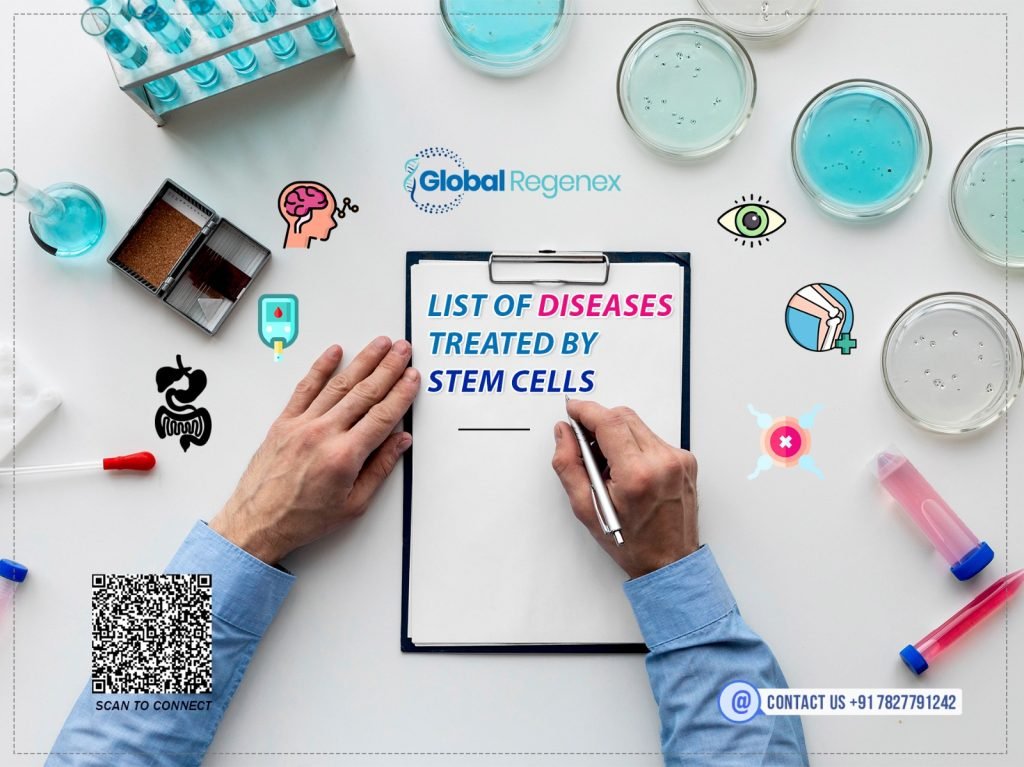
Did you ever consider how far medicine has advanced in the treatment of all sorts of conditions that were deemed impossible to treat prior? Well, fasten your seatbelt because the promise of stem cells is now revolutionizing the manner in which we approach disease & condition treatment. These small yet potent cells are able to revive deteriorated tissues and cells via the repair and regeneration process, instilling healing and recovery within the affected tissue. It’s the most promising innovation in the healthcare sector so far. Let’s begin exploring the exciting realm of stem cells and learn about the plethora of diseases being treated by means of stem cell therapy in India. What Are Stem Cells? Stem cells are specialized cells in our body with the potential to replicate and differentiate into a variety of cell types, including muscle cells, brain cells, etc. Stem cells can act as an internal repair system, heal by replacing cells, and regenerate the damaged tissue and cells. The cells are delivered to the patient in stem cell therapy to replace or restore lost cells. What Diseases Can be Treated Through Stem Cells? Some of the diseases and conditions currently being researched and studied with the help of stem cell therapy are as follows: Blood Disorders: Stem cells are showing promising results in treating leukemia and other blood-related disorders. Bone marrow transplant, also a form of stem cell therapy, is currently used to treat these conditions. Autoimmune Diseases: Some conditions, like multiple sclerosis (MS) and rheumatoid arthritis, are being treated with stem cell transplant to reprogram the immune system and minimize symptoms. Neurological Disorders: Stem cells are also showing some promising results in treating diseases like Alzheimer’s and other spinal cord injuries. Researchers are currently working in this field involving stem cells to cultivate nerve cells. Heart Diseases: These cells can also be used in repairing injured heart muscles after a heart attack, enhancing cardiac function, and survival of the patient. Type 1 Diabetes: Stem cells are also being studied to rebuild insulin-producing cells in the pancreas, with the hope of eventually providing a cure. Orthopedic Disorders: Patients with bone fractures, arthritis, and cartilage conditions can now hope for being healed through the use of stem cells for quicker and healthier recovery. Liver & Kidney Diseases: Stem cells are also investigated to determine if they can replace liver and kidney tissue, doing away with the need for organ transplant. Eye Disorders: Blindness and macular degeneration of the cornea are being treated by using stem cells for vision restoration. Cerebral Palsy and Autism: Research is investigating stem cell use to cure neurological and developmental conditions like cerebral palsy and autism for the enhancement of cognitive function and motor ability. Need Consultation? If you are the one who is suffering from any of these conditions mentioned above, and are looking for advanced and better treatment? Then, considering stem cell therapy in Delhi can be the hope you need. For making the process easier for you, Global Regenex, a renowned consultancy for stem cell therapy, has experts who are ready to guide you with every step of your recovery journey. If you are considering this treatment, consult with the experts at Global Regenex first to understand the treatment fully to make informed decisions. The Concluding Thoughts The possible prospects of applying stem cell therapy to heal an unprecedented number of diseases are revolutionary and paradigm-shifting. Stem cell therapy is transforming the face of medicine towards safer, more efficient, and regenerative medicine. Stem cells are making new methods possible in the war against cancer, these cells are able to renew damaged tissues, freeze for tens of thousands of neurological diseases one must suffer throughout their life, and stem cells are as vital as keys to the future of medicine. While opportunities continue to grow by the day, the journey has barely begun!
Is Gene Therapy Available in India?
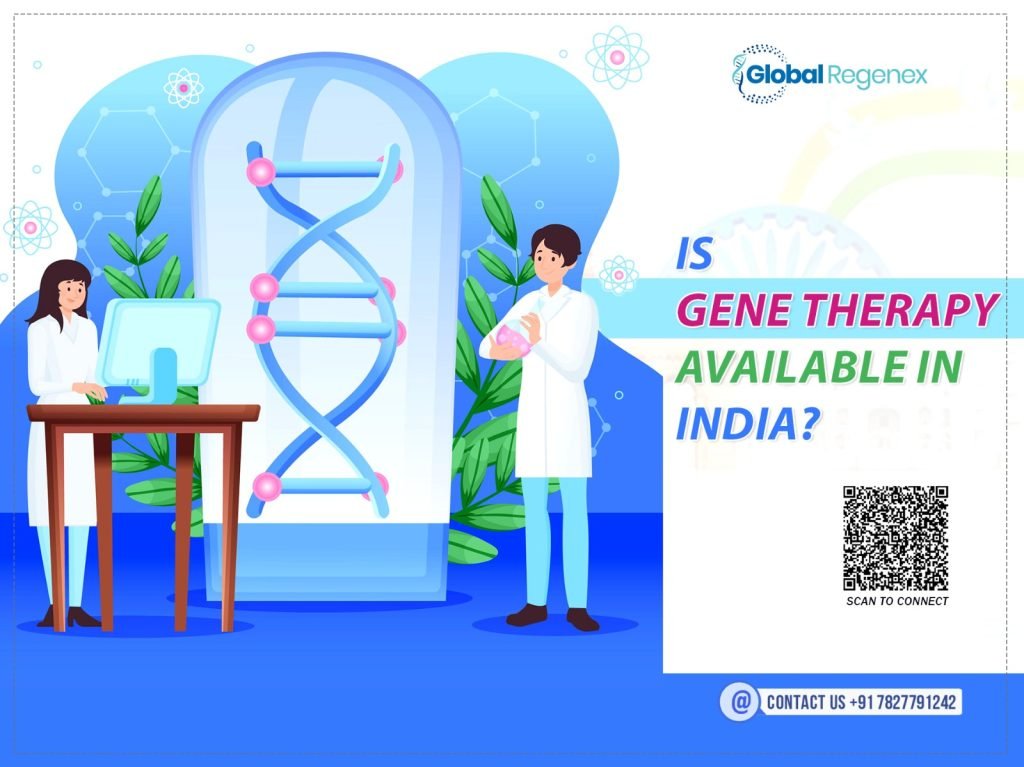
In the last few years, you might have heard of the term “gene therapy” while browsing the internet or medical advancements. It does sound futuristic, like something out of a sci-fi movie. But this therapy is very real, and it’s changing lives across the globe. If you live in India and are thinking, “Is gene therapy available in India?” With the advancements in medical treatments and increasing global medical innovations, many Indian patients and healthcare professionals are now exploring gene therapy as a viable option. If you are a caregiver, or one suffering from a rare genetic disorder, or simply intrigued by how medicine has progressed today, then this blog will give you insight into the progress that gene therapy is making in India, where it is at the moment, and where it is headed. Understanding Gene Therapy This innovative therapy is a medical technique that requires modifying or replacing faulty genes to treat or prevent diseases. Instead of just treating the symptoms with traditional medicines or surgery, gene therapy targets the main cause, which might be the DNA. It’s especially promising for conditions like hemophilia, spinal atrophy (SMA), and certain types of inherited blindness. This therapy can be performed in different ways: Inside the Body: In this method, the genetic material is delivered into the patient. Outside the Body: On the other hand, in this, cells are modified in the lab and then reintroduced into the patient’s body. Is Gene Therapy Available in India? Yes, gene therapy exists in India, even if it’s only in the preliminary stages of extensive use. In the past few years, the Indian medical industry has come a long way in adopting this sophisticated therapeutic modality. Here are the key factors: Regulatory Development: The Indian Council of Medical Research (ICMR) and Central Drugs Standard Control Organization (CDSCO) have introduced regulations to regulate gene therapy clinical trials and research. Clinical Trials: Clinical trials based on gene therapy have grown in India. Academic institutes and private biotech firms are also actively working in genetic disorder research. Commercial Availability: Gene-based therapy for SMA has come into India, but at a price that is unaffordable. Certain conditions under which gene-based therapies are now made available in special clinics and a limited number of hospitals. Homegrown Innovation: Local biotech companies are gaining control. Organizations are investing in indigenous gene therapy drugs that are developed for local populations. Medical Tourism and Collaborations: India’s growing reputation in medical tourism is also being reflected in international collaborations, making it possible to access gene therapies that are not yet available internationally in the local market. The Bottom Line Is gene therapy present in India? Definitely—but still in the emerging stage. As research increases, policy backing improves, and funds are invested, the situation is changing rapidly. For patients coping with life-transforming genetic diseases, gene therapy in India promises hope anew. As awareness improves and prices steadily decline, the prospects of customized, precision medicine in India have never seemed better. If you are thinking about this treatment option, speak with a certified genetic counselor or specialist to see what is currently available.
Bone Marrow Transplant Survival Rate by Age
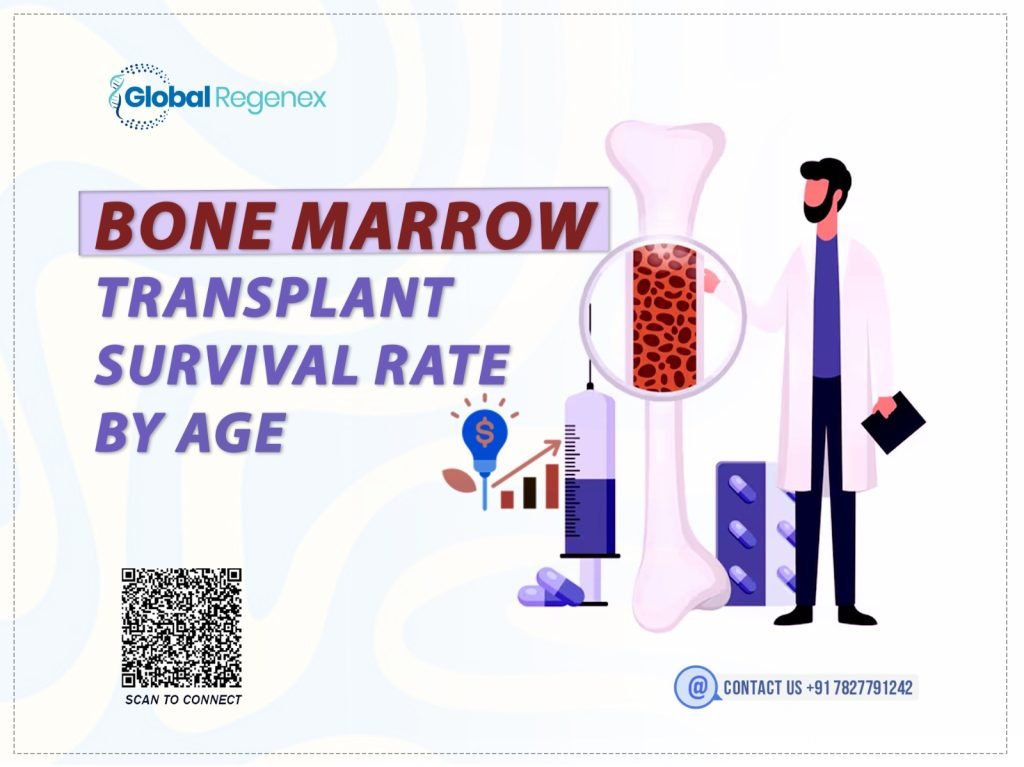
Seeking answers about bone marrow transplant, and what is its survival rate for different ages? Let’s be honest, just by hearing about bone marrow transplant, some might feel intimidated, even when you are attempting to understand the survival rates and results. If you or your closest ones are on this treatment journey, then it is important to know how age affects recovery and long-term success. Whether you are a worried patient, an adult patient, or a caregiver for an elderly person, being informed can make the process seem a little more manageable. In this blog, you will find out how age influences bone marrow transplant success for patients of different ages and why stem cell therapy is a revolution in bone marrow transplant. What Is a Bone Marrow Transplant? When you think of a transplant, you might think it’s a surgical process, but not necessarily. Bone marrow transplant is actually a medical process that replaces cancerous or destroyed bone marrow with normal stem cells. These stem cells can be sourced from the patient’s own body (autologous transplant) or a donor (allogeneic transplant). The main aim is to restore the body with healthy blood cells, to treat conditions like leukemia and severe aplastic anemia. How Age Influences Bone Marrow Transplant Survival Rates? When undergoing a bone marrow transplant, age is an important factor in whether or not your bone marrow transplant will be successful. It’s not only one, but it’s a larger one that physicians take into careful consideration when determining treatment. Infants & Children Young patients often have the best survival rates, usually over 85%, depending on the disease and type of transplant they are undergoing. Younger patients’ immune systems are more adaptable to stem cell transplant, minimizing complications. Adults (18-50 Years) Patients in this category have relatively high success rates, which are typically up to typically 60 to 80%. Bone marrow transplant results are affected by factors like overall health, how well the patient responds to chemotherapy, and the nature of the bone marrow disease. Older Adults (50+ Years) Patients older than 50 years have success rates that decrease with age, frequently to 40 to 60%, although varying. Older patients can experience more complications, which might be infections and longer recovery times, due to compromised immune systems and underlying medical conditions. Why Stem Cell Advancement Matters? Just by discovering the potential of stem cells has now promisingly changed the way, usually diseases were treated before. Stem cell use has also transformed the bone marrow transplant procedure. Here how: Improved Matches: The number of donor lists has grown so much, improving compatibility for all ages. Lower Risks: The advancement in stem cell therapy minimizes the risk of rejection and improves recovery, even among older patients. Focused Therapies: New conditioning regimens and post-transplant care protocols allow more patients, especially older adults, to become transplant candidates safely. Personalized Approaches Based on Age Physicians now treat patients in a personalized way, considering factors beyond chronological age. Patient’s biological age, general health, genetics, and stage of disease all figure into the best transplant strategy. This is the result of recognizing that even older patients, who would have previously been considered non-treatable, are now being treated with bone marrow transplant and achieving success with greater frequency. For Consultation If you are unsure about the process, potential benefits, and other facts, or are seeking professional advice to help guide you in making a decision to either have or not have a bone marrow transplant. Global Regenex has professionals who can respond to any queries you may have about stem cell treatment or bone marrow transplant, helping you at every step of your healthcare journey. To Bring It All Together Knowledge of the connection between age and bone marrow transplant survival rates can calm fears and empower informed choices. Due to breakthroughs in stem cells and stem cell therapy, more individuals, of any age, are having favorable results. If you or someone you know is contemplating this treatment, consult with an expert about your possibilities and the most recent breakthroughs that can make all the difference.
What Is The Success Rate Of Stem Cell Therapy?

Stem cell therapy, as you know, has completely changed the way of modern medicine, providing a promising alternative for patients suffering from degenerative and severe conditions. Whether it is for treating orthopedic injuries or neurologic or autoimmune conditions, stem cell therapy has now opened a new gateway for healing and improved quality of life for patients. However, the one question that has been asked the most is, “What is the success rate of this innovative treatment?”. Let’s explore this advanced treatment and find out the success rate of stem cell therapy. Keep reading. What Are Stem Cells? Stem Cells are special cells in the human body that can differentiate into specialized cells like muscle, nerve, and blood cells. Their regenerative power makes them heal damaged tissues, which means they are ideal for the therapy. Stem cell therapy employs the cells to induce healing, prevent inflammation, and cure injured tissues. Due to these properties, stem cell therapy has been put into use in many clinical fields, and significant clinical improvement in patients has been seen after stem cell treatment. Benefits of Stem Cell Therapy Stem cell therapy is a revolutionary medicine with natural healing and restoration. It is a therapy that uses one’s own cells to repair injured tissues and reduce inflammation. Some of its finest benefits are: Promotes natural healing by restoration of injured tissues. Eliminates pain and inflammation without continuous medication. Minimally invasive with faster recovery periods. Increases mobility and function of muscles and joints. Low risk of rejection since it entails the patient’s use of their own cells. It can delay or prevent surgery in most chronic illnesses. Stem cell treatment is commonly administered to treat orthopedic, neurological, and autoimmune disorders. Because its success rate and side effects are greater than usual treatment methods, stem cell therapy is revolutionizing contemporary medicine. Whether it be the problem of persistent pain or searching for an upscale treatment measure, this rejuvenation process poses a captivating solution option for enduring relief and overall improvement in one’s lifestyle. How Successful Is Stem Cell Therapy? The success rate of stem cell therapy can be very different based on multiple factors like the type of condition being treated, the age of the patient, and the types of stem cells used. However, the clinical data and patient testimonials point toward high success rates in various cases. Orthopedic: Osteoarthritis, ligament sprain, and tendonitis have been readily treated by stem cell therapy with 60% to 80% improvement. Neurological Disorders: Evidence exists that patients recover from movement as in the case of spinal injury, stroke, and Parkinson’s disease. Autoimmune Disease: Patients with autoimmune conditions have shown that up to 50% to 70% symptom control has been achieved with successful treatment. Whereas outcomes may be rather personal, most patients notice pain relief, improved mobility, and improved function during everyday activities. To put it into perspective, stem cell treatment is not a cure-all but a therapy directed towards supporting the regenerative process of the body. For Consultation Undergoing a new treatment can be daunting at first, which is why it is important to seek advice from the experts in the field, who can be better than regenerative experts at Global Regenex to answer all your questions and take away your doubts about stem cell therapy and regenerative medicine. They have world-class experts in regenerative medicine who are ready to guide you through your unique situation and have connections with prestigious hospitals to ensure you receive the best stem cell therapy available. Book a consultation with Global Regenex for a healthier tomorrow. The Bottom Line Stem cell therapy offers a new ray of hope to individuals seeking something different from traditional treatments. Even though success varies depending on multiple factors, the result as a whole is promising. Thanks to the expanding medical environment, stem cell treatment in India is becoming increasingly popular among local and international patients. If you’re looking to try this regenerative method, talk to Global Regenex to see if it’s the most suitable option for you.
Is Stem Cell Therapy Permanent?
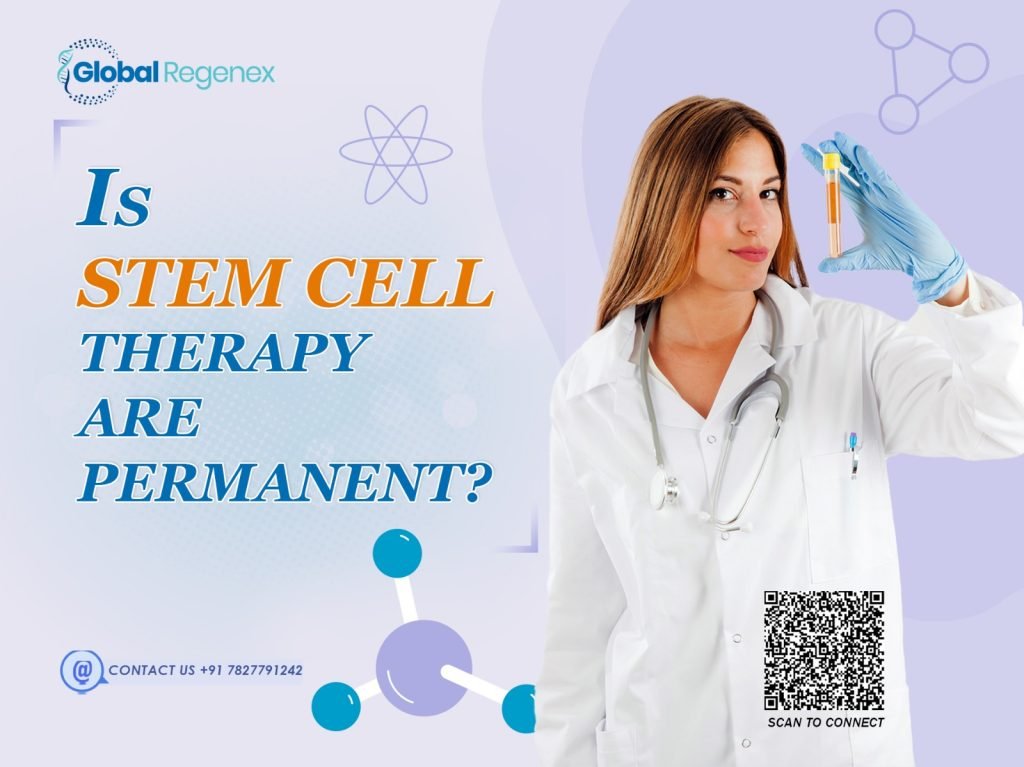
Are you struggling with severe conditions and tired of traditional treatment but still couldn’t find relief? It’s time to turn to stem cell therapy. An innovative regenerative medicine that has come forth as a potential treatment for many different types of diseases and conditions. This promotes healing through factors like replacing and restoring damaged tissues and cells in the body. Now, you are probably wondering if this treatment is permanent or temporary. With the increasing demand for stem cell treatment in India, more and more individuals are curious to know if it has long-term effects. The concept of using the regenerative power of the body feels so unreal, but does it really last forever? In this blog, let’s get into what makes this therapy revolutionary and if the results are truly permanent. Understanding the Scope & Effectiveness of Stem Cell Therapy What Are Stem Cells? Stem cells are tiny but powerful building blocks of life. They have the ability to differentiate into specialized cells like muscle, nerve, or blood cells. Stem cells facilitate the body’s ability to replace damaged tissues without the need for surgery. The regenerative power of stem cells has shown new ways to treat many different diseases like spine injury, neurodegenerative, etc. Overview of Stem Cell Therapy In the stem cell therapy procedure, stem cells are derived from the patient’s own bone marrow or fat, treated, and then injected into the affected part. Stem cells then start to repair damaged tissue and reduce inflammation to promote quick healing without surgery. Conditions Treated By Stem Cell Therapy Stem cell therapy can be used to treat a variety of medical conditions, such as: Neurological Disorders: Stem cell therapy is able to repair the regeneration of nerve cells and treat multiple sclerosis, Parkinson’s disease, and Alzheimer’s. Spinal Cord Injuries: The injured nerves will be repaired using stem cells that also restore feeling and movement to paralyzed patients. Diabetes: Stem cell therapy can potentially help in the regeneration of insulin secreting cells of pancreas. So, it is a new ray of hope for diabetic patients. Diseases of the Heart: Stem cells can heal damaged tissues after a heart attack and improve the functionalities of the heart. Orthopedic Conditions: Treat injuries of ligaments, arthritis, and other joint-related disorders to achieve pain relief and improved mobility for patients. Is Stem Cell Therapy Long-Term? Before undergoing the stem cell therapy, it is important to understand the therapy fully to set realistic expectations. Keep in mind that stem cell therapy is still in research, although it does show some promising results in treating various conditions. The effect of stem cell treatment can be long-term but not always permanent in every situation. The success is highly dependent on the condition the patient is being treated for, the age, and lifestyle. Some individuals have years of relief while others require follow-up treatments. Need Expert Advice? If you are looking for expert consultation to finalize your decision about undergoing stem cell therapy in Delhi, ask questions regarding the procedure, possible advantages, and more. Consulting with Global Regenex for all your questions on stem cell therapy and regenerative medicine, they have a team of experts who are ready to answer and guide you with every step of your stem cell treatment. Putting It All Together Is stem cell therapy permanent? Not necessarily. It does provide long-term relief and recovery for some patients, but the period of results varies with each patient and condition. Choose a reputable stem cell therapy provider center in India for experienced experts that offer individuals with stem cell treatment that are more successful and have long-lasting results. And it is always best to discuss with your specialist for proper expectations on your healing timeline.
How Long It Take to Have a Stem Cell Transplant?
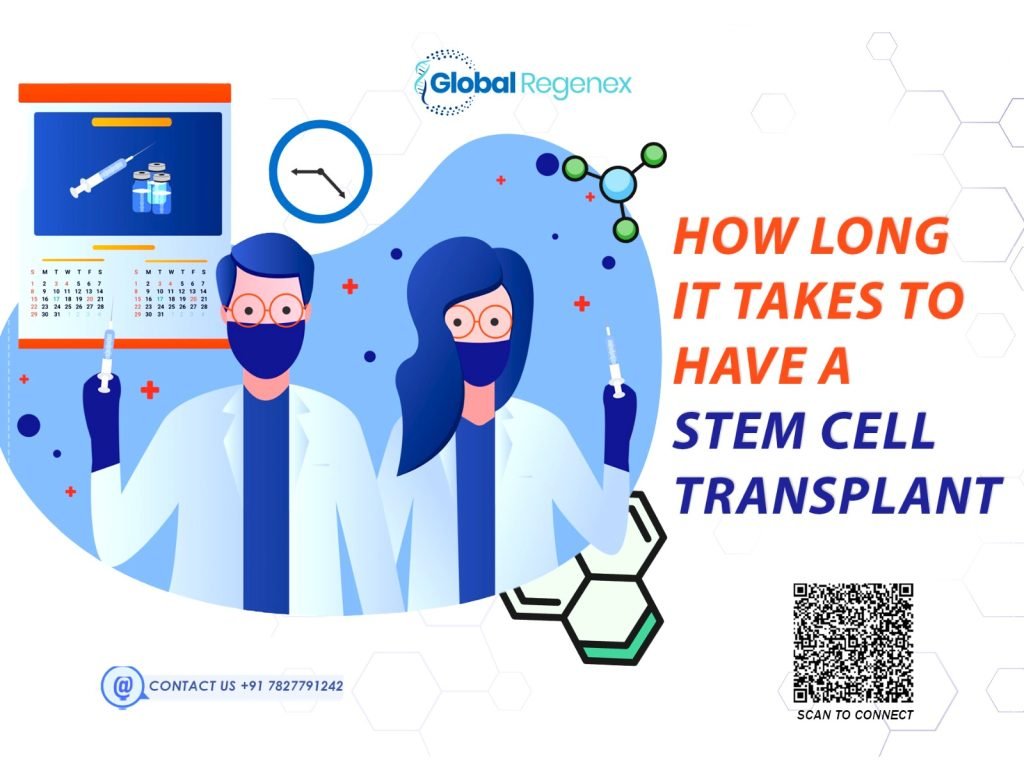
Dealing with a degenerative condition and considering a stem cell transplant as treatment for it? This would be a great way to treat these conditions. Stem cell transplant is the process where stem cells are used to promote healing through replacing and restoring the damaged tissues or cells in the body. Now, you must be thinking about how long a stem cell transplant takes to work properly. It is helpful to understand the full process of stem cell transplant in India, whether it is for yourself or someone you love. In this blog, let’s break it down in a simple word so you know what exactly to expect. What is a Stem Cell Transplant? Stem cell transplant uses stem cells, which are interestingly renowned for their ability to differentiate into several types of cells within the body. These cells are a remarkable alternative for treating many diseases as they promote healing through replacement and regenerate damaged cells in the body with healthy ones. By healing the damaged tissues, it minimizes the inflammation in the damaged area. Benefits of Stem Cell Transplant Here are some benefits of stem cell transplant listed below: Secures Highgate: Stem cells possess remarkable potential to significantly quicken the process of healing for the body, particularly in orthopedic trauma to ligaments, tendon rupture, and cartilage injury. Decrease Pain and Inflammation: By modulating the immune system, stem cell therapy can reduce chronic pain and swelling, alleviating conditions such as arthritis and autoimmune disorders. Less Invasive: The majority of stem cell therapies are non-invasive or minimally invasive, creating shorter recovery times and less danger. Supports Natural Reconstitution: Unlike traditional treatment that merely suppresses the symptom, stem cell therapy performs better by activating the body towards restoring damaged tissue naturally. Reduced Medication Use: In body function repair, stem cell therapy decreases reliance on medication for pain and chronic medication. Therapeutic Value: As stem cells are harvested from one’s own body, there is no risk of rejection, hence, more effective and personalized therapies are obtained. Understand the Timeline for Stem Cell Transplant Although the whole process of transplant might take only one day, the full process from preparation to transplant can take a few weeks. Here is the procedure in detail: Evaluation & Preparation (1-2 days) Before undergoing the stem cell transplant, patient is require to carry out some tests to asses their health by doctors to ensure they are a perfect fit for the procedure. These evaluations might include blood tests, imaging, and sometimes biopsy. Once cleared, the patient will now begin a conditioning regimen to prepare their body. Conditioning Treatment (5-10 days) For conditioning, the patient’s body involves chemotherapy, radiation, or a combination of both to remove unhealthy cells and make space for the new stem cells. This phase is important as it helps reduce the risk of transplant rejection and promote the right environment for new cells to grow. Stem Cell Collection and Infusion (1-2 days) If the patient is receiving an autologous transplant, the stem cells are collected from their own body. In allogeneic transplants, they’re collected from a donor. The actual stem cell infusion is very quick and painless and feels a lot like having a blood transfusion and should only take a few hours. Engraftment and Monitoring (2–4 Weeks) This is when the new stem cells in the blood begin to produce healthy blood cells. Patients are closely watched at this time for infection, complication, or graft-versus-host disease. Regular blood checks are also done to watch for progress. Early Recovery and Follow-Up (1–3 Months) After you’re discharged, follow-up is routine. You’ll need to take medications, protect yourself against infections, and adopt a healthy lifestyle to help your body settle in. Your immune system is down for a while, and hence, you must be cautious even after going home. For Consultation Seeking the advice of an expert would be an excellent choice if you are thinking about undergoing treatment with stem cell therapy but would like to ask questions regarding the procedures, possible advantages, or being a candidate for treatment. Asking Global Regenex experts for advice can inform you more about the optimal health and medical considerations for your unique situation. Experienced professionals in their field can guide you through this experience to ensure you receive the best assistance available. The Concluding Thoughts Although the actual infusion of stem cells can be completed in just one day, the entire process for doing stem cell treatment in India might take several weeks or even months. Evaluations and conditioning are followed up by recovery and then monitoring. Each procedure contributes to the success of stem cell therapy in Delhi or other places. Provided with proper care and direction, most patients have life-changing outcomes.
How Effective Is Stem Cell Therapy for Stroke?

If you have someone you love who has experienced a stroke, you probably think, It is the end, but no! Even though you might have explored several treatment options, that could be medication, physiotherapy, or maybe surgery. But have you ever come across stem cell therapy? It is the most interesting and potential treatment for many degenerative and severe conditions. Due to its potential to regenerate damaged tissues and cells for healing in the body. Many patients are now turning to stem cell therapy in India for a second chance at recovery after a stroke. In this blog, let’s break down every important detail about this innovative therapy and how effective it is. Stem Cell Therapy for Stroke Stem cell treatment uses stem cells to reduce neuroinflammation by regenerating and replacing damaged tissue or nerves in the brain, which have been lost due to the effects of stroke. This ability of stem cells makes them a potential yet powerful alternative medicine for many degenerative and severe conditions. Stem cell therapy for stroke shows as promising new treatment options are currently explored to provide patient relief from the debilitating effects of a stroke. Many clinical results have been exciting, stem cells do offer themselves as a promising treatment for stroke. Benefits of Stem Cell Therapy for Stroke Recovery Targets Damaged Brain Tissue Stem cells possess the special capability of transforming into various types of cells. When they are injected into the brain or blood, they can repair or replace stroke-damaged neurons. This can ultimately salvage some of the lost capabilities, providing new hope for stroke survivors. Improves Mobility and Motor Function Weakness of limbs and mobility is one of the most prevalent after-effects of stroke. Stem cell therapy has been found to have extremely encouraging results in restoring the motor function and muscle control of stroke patients when used in combination with rehabilitation therapies in India. Reduces Brain Inflammation When recovering from a stroke, inflammation tends to cause more harm to the brain. Stem cells, through anti-inflammatory agents they release, can reverse this harm and provide a better healing environment in the brain tissue. Promotes Neurogenesis Neurogenesis, or the creation of new brain cells, is constrained after a stroke. Stem cells trigger the formation of these cells, stimulating natural repair mechanisms that could improve how the brain performs in the long run. Safe and Minimally Invasive Procedure Stem cell therapy in Delhi is generally conducted through noninvasive procedures such as intravenous infusion or spinal puncture. If done in licensed centers with expert doctors, the therapy is mostly risk-free with minimal unwanted side effects. Accessible and Affordable India has become a hub for stem cell therapy because of its world-class medical treatment and low cost. India clinics provide world class stem cell therapy and thousands of local and foreign patients prosper in there. For Consultation Ask about the procedure, possible advantages, and other information if you are looking for professional guidance to assist you in deciding whether or not to undergo stem cell treatment in Delhi. Global Regenex has professionals who can answer any questions you have regarding stem cell therapy and regenerative medicine and assist you at each step of your stem cell treatment. Summarization While the research on stem cell therapy for stroke is still ongoing, current results show that stem cell therapy holds a strong potential in helping patients with stroke recover important functions and improve their quality of life. If you are seeking advanced treatment options, exploring stem cell therapy might be a good step worth taking. If you still have doubts, consult with a Global Regenex professional to evaluate if stem cell therapy is right for your condition.
